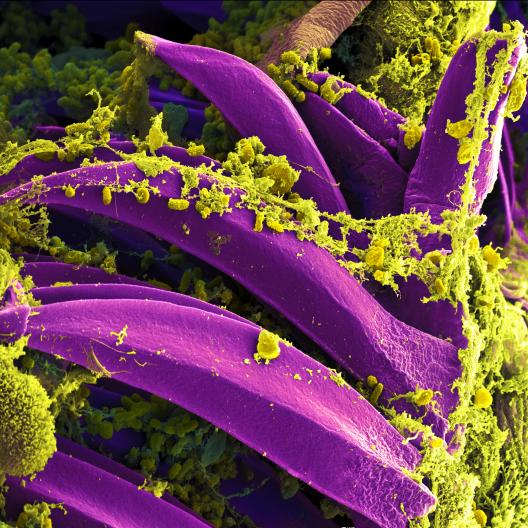Desai, A., Sowerwine, K., Liu, Y., Lawrence, M.G., O’Connell, M.P., Chovanec, J., Hsu, A.P., Boris, L., Jones, N., Zerbe, C., Wisch, L., Maric, I., Lee, R.C., Gilfillan, A., Stone, K.D., Milner, J.D., Holland, S.M., Metcalfe, D.D., Lyons, J.J. GATA2-deficient mast cells limit type I hypersensitivity reactions in humans. J Allergy Clin Immunol. 2019 May 15.
Lyons, J.J., Liu, Y., Ma, C., Yu, X., O'Connell, M.P., Lawrence, M., Zhang, Y., Karpe, K., Zhao, M., Siegel, A., Stone, K.D., Nelson, C., Jones, N., Dimaggio, T., Darnell, D., Mendoza-Caamal, E., Orozco, L., Hughes, J., McElwee, J., Hohman, R., Frischmeyer-Guerrerio, P., Rothenberg, M., Freeman, A., Holland, S., and Milner, J.D. ERBIN deficiency links STAT3 and TGF-β pathway defects with atopy in humans. J Exp Med. 2017 Mar 6.
Lyons, J.J., Yu, X., Hughes, J.D., Le, Q.T., Jamil, A., Bai, Y., Ho, N., Zhao, M., Liu, Y., O'Connell, M.P., Trivedi, N.N., Nelson, C., DiMaggio, T., Jones, N., Matthews, H., Lewis, K.L., Oler, A.J., Carlson, R.J., Arkwright, P.D., Hong, C., Agama, S., Wilson, T.M., Tucker, S., Zhang, Y., McElwee, J.J., Pao, M., Glover, S.C., Rothenberg, M.E., Hohman, R.J., Stone, K.D., Caughey, G.H., Heller, T., Metcalfe, D.D., Biesecker, L.G., Schwartz, L.B., Milner, J.D. Elevated basal serum tryptase identifies a multisystem disorder associated with increased TPSAB1 copy number. Nat Genet. 2016 Dec.
Kaur, A., Webster, M.R., Marchbank, K., Behera, R., Ndoye, A., Kugell III, C.H., Dang, V.M., Appleton, J., O’Connell, M.P., Cheng, P., Valiga, A.A., Morissette, R., McDonnell, N.B., Ferrucci, L., Kossenkov, A.V., Meeth, K., Tang, H., Yin, X., Wood III, W.H., Lehrmann, E., Becker, K.G., Flaherty, K.T., Frederick, D.T., Wargo, J.A., Cooper, Z.A., Tetzlaff, M.T., Hudgens, C., Aird, K.M., Zhang, R., Xu, X., Liu, Q., Bartlett, E., Karakousis, G., Eroglu, Z., Lo, R.S., Chan, M., Menzies, A.M., Long, G.V., Johnson, D.B., Sosman, J., Schilling, B., Schadendorf, D., Speicher, D.W., Bosenberg, M., Ribas, A., and Weeraratna, A.T. sFRP2 in the aged microenvironment drives melanoma metastasis and resistance to targeted therapy. Nature. 2016 Apr 14.
O’Connell, M.P.*, Hox, V.*, Lyons, J.J., Sackstein, P., Dimaggio, T., Jones, N., Nelson, C., Boehm, M., Holland, S.M., Freeman, A.F., Tweardy, D.J., Olivera, A., Metcalfe, D.D., Milner, J.D. Diminution of signal transducer and activator of transcription 3 signaling inhibits vascular permeability and anaphylaxis. J Allergy Clin Immunol. 2016 Jul;138(1):187-99. doi: 10.1016/j.jaci.2015.11.024. * Co-first author
O’Connell M.P., Marchbank K., Webster M.R., Valiga A., Kaur A.A., Vultur A.M., Li L., Herlyn M., Villanueva J., Liu Q., Yin X., Widura S., Nelson J., Ruiz N., Camilli T.C., Indig F.E., Flaherty K.T, Wargo J.A., Frederick D.T.,. Cooper Z.A., Nair S., Amaravadi R.K., Schuchter L.M., Karakousis G., Xu W., Xu X., Weeraratna A.T. Hypoxia induces phenotypic plasticity and therapy resistance in melanoma via the tyrosine kinase receptors ROR1 and ROR2. Cancer Discov. 2013 Dec;3(12):1378-93.
Visit PubMed for a complete publication listing.



